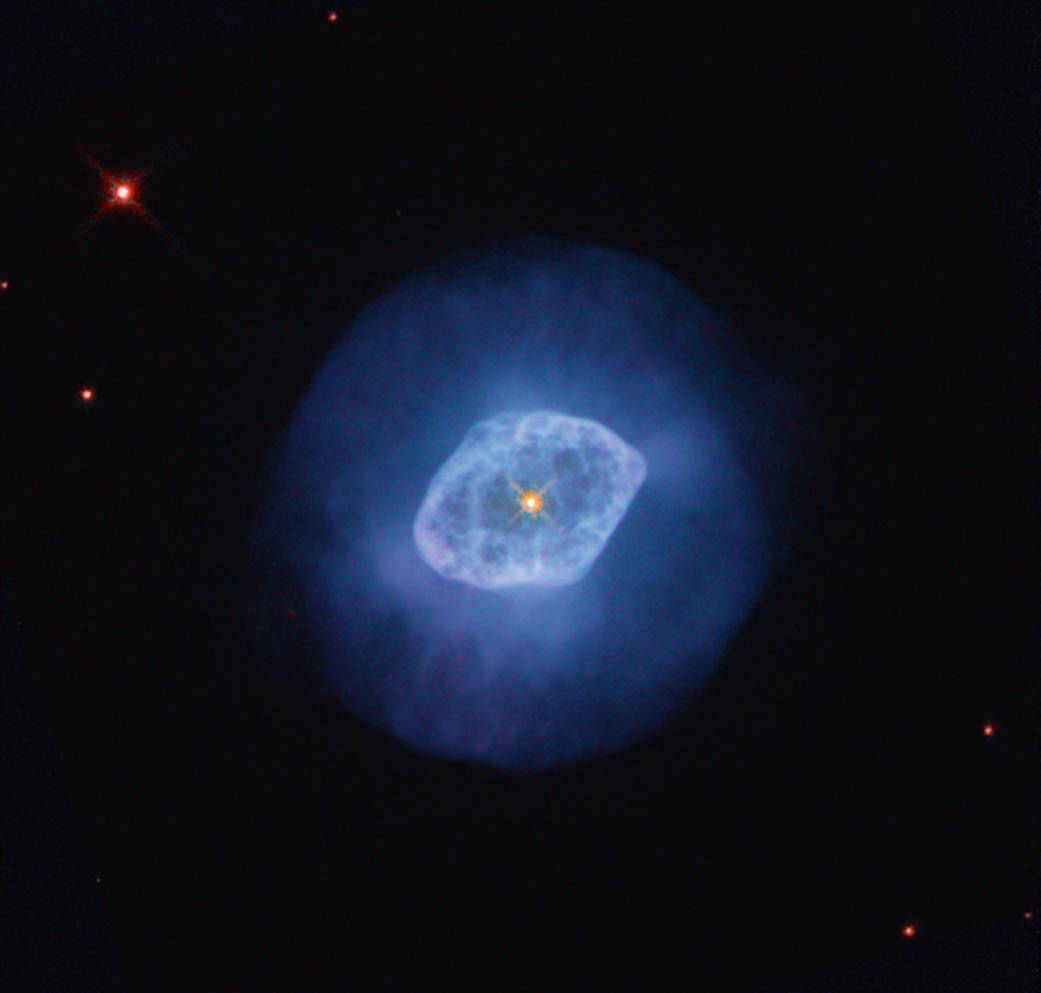NGC 6891 is a bright, asymmetrical planetary nebula in the constellation Delphinus, the Dolphin. This Hubble image reveals a wealth of structure, including a spherical outer halo that is expanding faster than the inner nebula, and at least two ellipsoidal shells that are orientated differently. The image also reveals filaments and knots in the nebula’s interior, surrounding the central white dwarf star. From their motions, astronomers estimate that one of the shells is 4,800 years old while the outer halo is some 28,000 years old, indicating a series of outbursts from the dying star at different times.
NGC 6891是一个明亮的、不对称的行星状星云,位于海豚座。这张哈勃图像揭示了丰富的结构,包括一个比内星云膨胀得更快的球形外晕,以及至少两个方向不同的椭球壳。这张照片还揭示了星云内部围绕中央白矮星的丝状和结状结构。根据他们的运动,天文学家估计其中一个椭球壳有4,800年的历史,而外晕大约有28,000年的历史,这表明垂死的恒星在不同的时间发生了一系列的爆发。
Hubble studied NGC 6891 as part of efforts to gauge the distances to nebulae, and to learn more about how their structures formed and evolved. NGC 6891 is made up of gas that’s been ionized by the central white dwarf star, which stripped electrons from the nebula’s hydrogen atoms. As the energized electrons revert from their higher-energy state to a lower-energy state by recombining with the hydrogen nuclei, they emit energy in the form of light, causing the nebula’s gas to glow.
哈勃对NGC6891进行了研究,作为测量星云距离的一部分,并进一步了解其结构是如何形成和演化。NGC 6891由被中央白矮星电离的气体组成,后者从星云的氢原子中剥离了电子。当被激发的电子通过与氢原子核复合而从高能态恢复到低能态时,它们以光的形式发射能量,使星云的气体发光。
Image Credit: NASA, ESA, A. Hajian (University of Waterloo), H. Bond (Pennsylvania State University), and B. Balick (University of Washington); Processing: Gladys Kober (NASA/Catholic University of America)
图片来源:NASA、ESA、A. Hajian(滑铁卢大学)、H. Bond(宾夕法尼亚州立大学)和 B. Balick(华盛顿大学);处理:Gladys Kober(美国宇航局/美国天主教大学)



